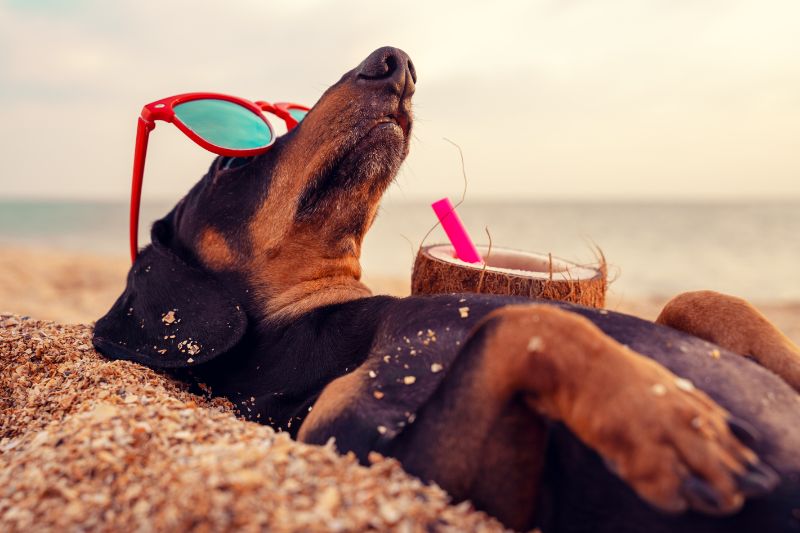
Got SPF? A Simple Approach to Pet Sun Protection

We are fast approaching the loveliest days of the year. Long, sun-filled days full of outdoor activities that range from lounging in the hammock to gardening, going for a leisurely stroll through your neighborhood, or some time cycling along the Potomac. In other words, dear pet owners, it’s time to get geared up!
Meeting your pet’s hydration and comfort needs while out and about is critical, but something easily overlooked is their exposure to harmful UV rays. Pet sun protection is essential now, and we’ve got the scoop.
Much Like Us
Pets are not immune to the harmful effects of the sun. Like us, their skin can be burned by the sun, causing temporary pain, inflammation, irritation, skin loss, thickened, crusty, or scaly skin, secondary bacterial infection – and possible lifelong damage.
Unfortunately, skin cancer is a known possibility in pets that experience long term overexposure to ultraviolet rays.
What About Their Fur?
Despite some of us having hair on our heads, we still cover up with large-brimmed hats and sunglasses. Since they’re covered in fur, it makes sense to question how pets suffer from the effects of the sun.
Ultraviolet rays are separated into two known classes:
- UVA – Ultraviolet A rays penetrate deep into the tissue of the skin (through the epidermis and dermis layers to the subcutaneous layer), causing wrinkles, early signs of aging, and skin damage. UVA rays have the potential to affect pets year round.
- UVB – Ultraviolet B rays burn the skin, turning it bright red. These rays are strongest during the months between Spring and Fall, and between the warmest parts of the day (10am – 4pm).
Overexposure to both UVA and UVB can damage the thin layer of tissue on the skin’s surface, causing inflammation and destruction of the skin’s immunity. Over time, repeated and prolonged exposure can change the cells, causing serious damage and cancer.
Game Changer
Pets with darker pigmentation in the fur and skin are considered less high-risk than animals with short, white coats, patchy white coats, pink noses, and non-pigmented skin.
Pets with thicker fur have a greater defense than those with thin, short hair. Likewise, pets with exposed/hair-less features, like the ears, nose, and eyelids are prone to sun damage.
Pet Sun Protection
Possibly the most effective method to support pet sun protection is to keep them out of direct sun between 10am and 4pm. Always seek the most shade possible for them when outside.
Sunscreen isn’t just for people! There are many pet-safe products available that pet owners can apply to the most vulnerable sections of their pet’s face and body.
- We recommend testing pet sun protection on a small area of their body to ensure they won’t have an allergic reaction.
- Apply a small amount to the ear tips, muzzle, armpits, groin and abdomen.
- Distract them with a game of fetch or offer them a treat so they don’t immediately lick the product off.
- Choose not to cut your pet’s hair during the summer.
- Discourage your pet from snoozing in a sunny spot (although it feels so good!).
Good Times Ahead
The bottom line is that with a little pet sun protection, you can reduce their chances of skin damage, painful inflammation, or even cancer. If you have questions about your pet’s exposure or outdoor lifestyle, please give us a call.
Contact Us!
2301 Columbia Pike #G-1, Arlington, VA 22204
Phone: (703) 920-5300
Fax: (703) 685-8860
Email: info@myarlingtonvet.com
Office Hours
-
Monday
8 a.m. – 8 p.m.
-
Tuesday
8 a.m. – 8 p.m.
-
Wednesday
8 a.m. – 6 p.m.
-
Thursday
8 a.m. – 6 p.m.
-
Friday
8 a.m. – 6 p.m.
-
Saturday
8 a.m. – 2 p.m.
-
Sunday
CLOSED
- Doctors’ hours are by appointment only.



